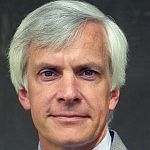 (HOST) Some controversy still lingers as to whether Robert Peary was, in fact, the first person to reach the North Pole. But even if he was, he didn’t get there alone. Here’s commentator and Vermont Humanities Council Executive Director Peter Gilbert to tell you about his companion.
(HOST) Some controversy still lingers as to whether Robert Peary was, in fact, the first person to reach the North Pole. But even if he was, he didn’t get there alone. Here’s commentator and Vermont Humanities Council Executive Director Peter Gilbert to tell you about his companion.
(GILBERT) It wasn’t that long ago, really, just a hundred years ago this Saturday that men may have reached the North Pole for the first time. They were Robert Peary, an African American named Matthew Henson, and four Inuit men — Ootah, Eginwah, Seegloo, and Ooqueah.
It’s been only in more recent decades that Peary’s African American companion has begun to get the attention – and credit – he deserves. Henson’s ability to speak Inuit and the essential skills he learned from the Inuit were critical to the expedition. He learned about the Inuit’s way of life, including their clothing, how to build igloos, and how to build and drive dog sledges (with the dogs running not lined up behind each other as they do in Alaska, but each dog on a separate tugline, spread out in the shape of a fan). Henson was enormously popular with the Inuit; the name they called him meant "Matthew, the Kind One."
Born a year after the end of the Civil War, Henson was the son of Maryland sharecroppers. Orphaned at 13, he went to sea. At 21, he met Lt. Robert Peary by chance, was hired as his manservant, and traveled with him on a surveying expedition to Nicaragua. Bright, brave, and hard-working, he didn’t remain Perry’s servant for long; Hansen soon became a valued companion.
Shortly after their return from Central America, Peary invited Henson to accompany him on an expedition to northwest Greenland. Peary warned Henson of the dangers of the trip and noted that Henson’s African heritage – being what he called a "son of the Equator" would make the Arctic difficult for him. Henson accepted the invitation to go North, adding, "I think I’ll stand it as well as any man." It was just the first of many expeditions to the North that they would make together.
On their final expedition, Hansen’s dog team arrived at what may have been the Pole 45 minutes before Peary. They all took the requisite photos of themselves holding flags and dressed in bulky fur pants and hooded parkas, and then headed for home.
When they returned to the States, Peary was promoted to Rear Admiral and awarded a sizable pension. He was honored by Congress, the National Geographic Society, and countless others, but none of the honors he received even mentioned Matthew Henson.
But in the ‘forties and ‘fifties, Henson began to be honored, if not well-known: in 1954 President Eisenhower held a White House reception for him and his wife. When he died in 1955 at the age of 88, he was buried in Woodlawn Cemetery in the Bronx. But Harvard Professor S. Allen Counter led the effort to honor him as the "Co-Discoverer of the North Pole," and on April 6, 1988, exactly 79 years after he may have reached the Pole, Henson was reburied with full military honors beside Peary’s grave in Arlington National Cemetery.